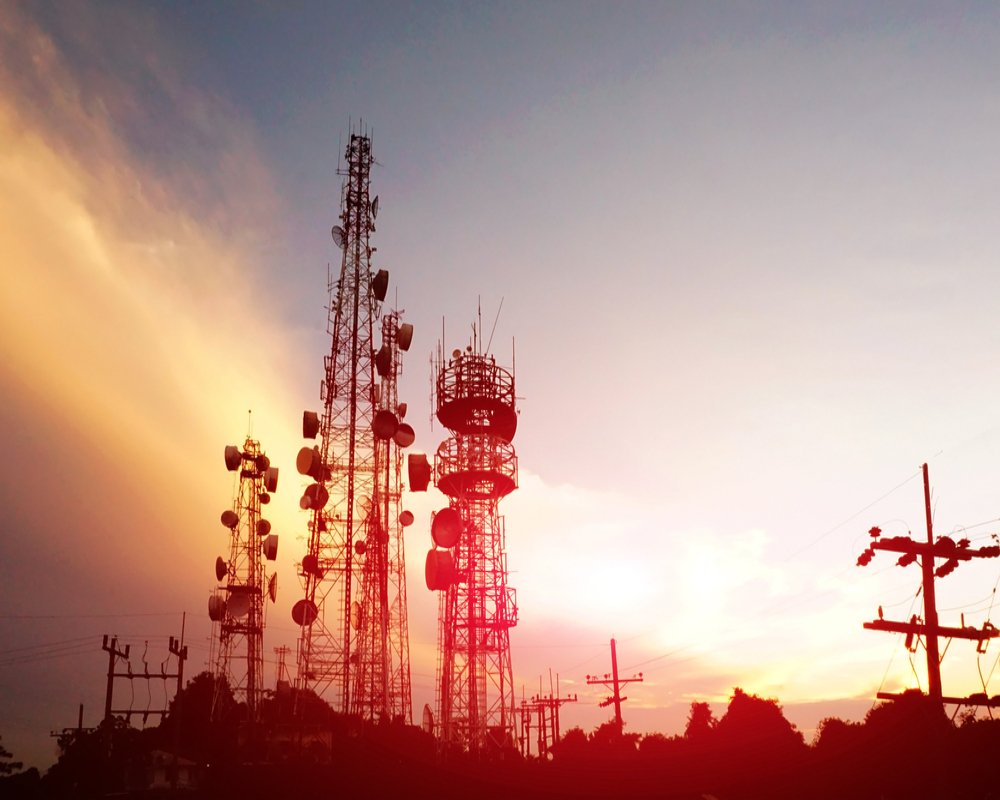Introduction
Telecommunication infrastructure is a critical component for the success of any commercial land development. With the growing reliance on digital communication, internet connectivity, and data-driven business operations, having reliable telecom infrastructure is essential. Whether it’s for small offices, large corporate headquarters, or manufacturing facilities, robust telecom infrastructure supports productivity, communication, and the seamless delivery of services. This article explores the key considerations and components of telecom infrastructure for commercial land sites, covering everything from connectivity options to regulatory requirements.
1. Importance of Telecom Infrastructure
Telecom infrastructure is the backbone of modern communication systems. For commercial properties, access to high-speed internet, telephone lines, data services, and wireless networks is crucial for day-to-day operations. Without reliable telecom services, businesses face disruptions in communication, reduced productivity, and potentially even loss of customers or revenue. Thus, planning and ensuring the availability of telecom services is an integral part of the site development process.
2. Types of Telecom Services
Telecom services can include a variety of communication and data services, which are essential for different types of businesses. These services generally fall into several categories:
- Landline Telephone Service: Traditional wired telephone connections.
- Broadband Internet Service: High-speed internet access via fiber optic, cable, DSL, or satellite.
- Wireless Communication Networks: Including cellular services and Wi-Fi for both internal and external connectivity.
- Data Centers: For hosting and managing critical data, especially in larger commercial developments.
- Satellite Communication Systems: Used when wired or cellular services are not available.
The specific needs will depend on the business type and the level of technology integration required.
3. Connectivity and Access Points
For telecom services to function, access points need to be identified on the land site. This involves determining the proximity to existing telecom infrastructure such as fiber optic cables, data lines, and wireless towers. It’s essential to understand how close the property is to a telecom exchange or how far away it is from the nearest fiber optic or broadband infrastructure.
- Fiber Optic Cables: Fiber optics are often the preferred method for broadband internet connections due to their high speed and capacity. A site should be assessed for its proximity to existing fiber networks or the feasibility of extending them to the property.
- Cable and DSL Lines: In areas where fiber optics are not available, coaxial cable or DSL lines may be an alternative for broadband access.
- Microwave and Satellite Links: In remote or rural locations, these may be the only options for reliable telecom services, although they may be less stable and have higher latency.
4. Network Design and Installation
Proper network design is essential to ensure that telecom infrastructure meets the demands of the business. This includes determining the layout for internal wiring, the placement of telecom equipment, and the installation of network switches and routers. For large commercial sites, a well-structured network design ensures high-speed data transfer, redundancy, and security.
The design process should also include consideration of:
- Server Rooms and Data Centers: These areas should be equipped to house servers, networking equipment, and backup systems. Adequate cooling and power supply should be integrated into the design.
- Wiring and Cabling: Internal wiring for telecommunications should be routed safely and efficiently throughout the commercial space, with dedicated spaces for telecom panels and junction boxes.
5. Wireless Connectivity
In addition to wired infrastructure, providing wireless connectivity is vital for most modern commercial sites. Wi-Fi access points must be strategically placed throughout the property to provide coverage in key areas such as offices, conference rooms, common areas, and outdoor spaces.
For larger developments, private wireless networks, such as private LTE or 5G, may be installed to ensure secure and high-capacity wireless connections. This is especially critical in industries such as healthcare, manufacturing, or logistics, where data transfer is constant, and delays could affect operations.
6. Redundancy and Reliability
In commercial developments, ensuring telecom infrastructure reliability is essential. Redundant systems must be in place to prevent downtime. This may involve:
- Backup Internet Connections: Secondary broadband connections or a combination of wired and wireless systems can ensure continuous service in case of failure.
- Power Backup for Telecom Equipment: Uninterruptible power supplies (UPS) and backup generators should be installed to ensure that telecom equipment remains operational even during power outages.
- Failover Systems: Automatic failover systems that switch between primary and backup services in the event of a disruption.
7. Scalability of Telecom Systems
Scalability is a significant consideration when developing telecom infrastructure for commercial land sites. As businesses grow, their telecom needs will evolve, requiring more bandwidth, additional data storage, and expanded communication systems. A well-planned telecom infrastructure should allow for easy upgrades and the addition of new services without disrupting ongoing operations.
- Fiber Infrastructure: Fiber networks offer high scalability, allowing bandwidth to be easily increased as demand rises.
- Cloud Integration: Cloud-based services, such as cloud storage and cloud computing, require solid telecom infrastructure, ensuring that the bandwidth can accommodate fluctuating data needs.
8. Compliance with Regulatory Requirements
Telecom infrastructure must comply with various local, state, and national regulations. These regulations often govern issues such as the installation of telecom equipment, data protection, and privacy. For instance, businesses in industries such as healthcare or finance may need to ensure that their telecom systems comply with strict standards for data security, such as HIPAA in the U.S. or GDPR in Europe.
It is also essential to obtain the necessary permits and licenses before installing telecom equipment or establishing connectivity, especially if the infrastructure involves extensive excavation, aerial cables, or the installation of antennas.
9. Maintenance and Monitoring
Once the telecom infrastructure is in place, ongoing maintenance and monitoring are crucial for ensuring system performance and reliability. Routine checks for signal strength, network security, and hardware performance should be scheduled. Regular updates and patches for software used in the network should also be implemented to avoid vulnerabilities and improve functionality.
Some developers may choose to work with telecom service providers who offer ongoing monitoring and support services. This ensures that any issues are identified and resolved before they impact the business operations.
10. Cost Considerations and Budgeting
The installation and maintenance of telecom infrastructure can be costly, particularly for large commercial sites. When planning for telecom services, developers must consider:
- Installation Costs: This includes trenching, cabling, labor, and equipment costs.
- Monthly Service Fees: Telecom providers typically charge for ongoing internet, phone, and data services.
- Future Upgrades: The budget should also account for the potential costs of scaling the system in the future.
It’s important to work with telecom experts to determine the most cost-effective and efficient solutions that meet the current and future needs of the business.
Conclusion
Telecom infrastructure is a foundational element of modern commercial land development. Ensuring that a commercial property has reliable, scalable, and compliant telecom services is critical for maintaining business operations and meeting the demands of today’s data-driven economy. By considering factors such as network design, redundancy, wireless connectivity, compliance, and future scalability, developers can create a telecom infrastructure that supports current needs and allows for future growth. Properly planning and budgeting for telecom services ensures that the commercial site is equipped for seamless communication and operation in an increasingly connected world.
Hashtags
#TelecomInfrastructure #CommercialLand #Telecommunications #NetworkSolutions #InfrastructureDevelopment #SmartCities #Connectivity #BroadbandAccess #TelecomSites #RealEstateDevelopment #DigitalInfrastructure #FiberOpticNetwork #WirelessTechnology #TelecomIndustry #SiteDevelopment #UrbanPlanning #BusinessConnectivity #TelecomTrends #InfrastructureInvestment #TechInRealEstate


